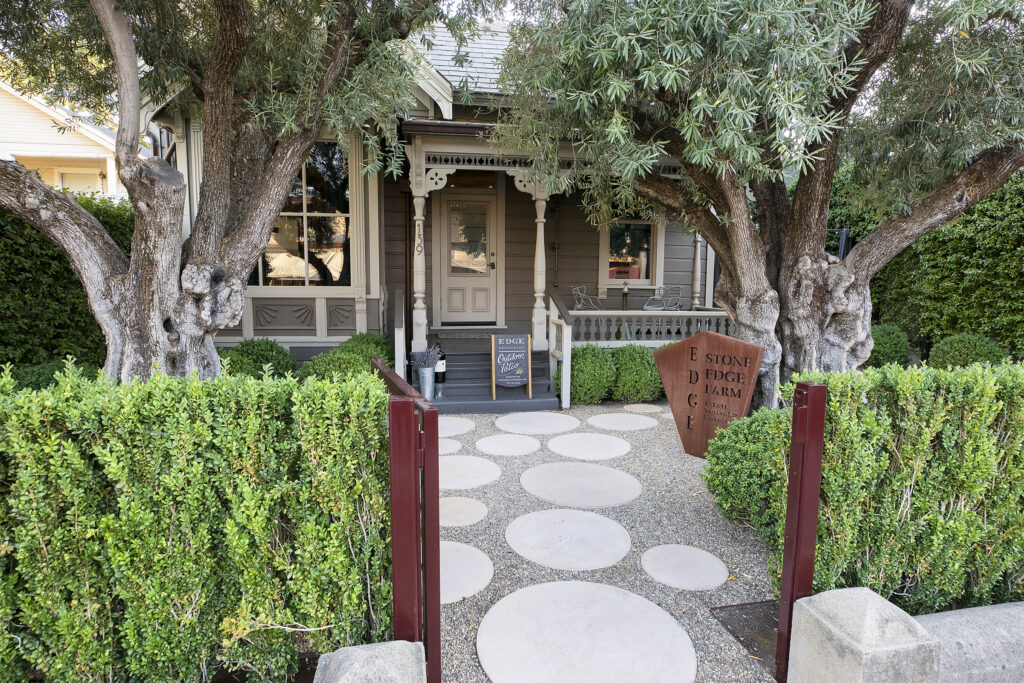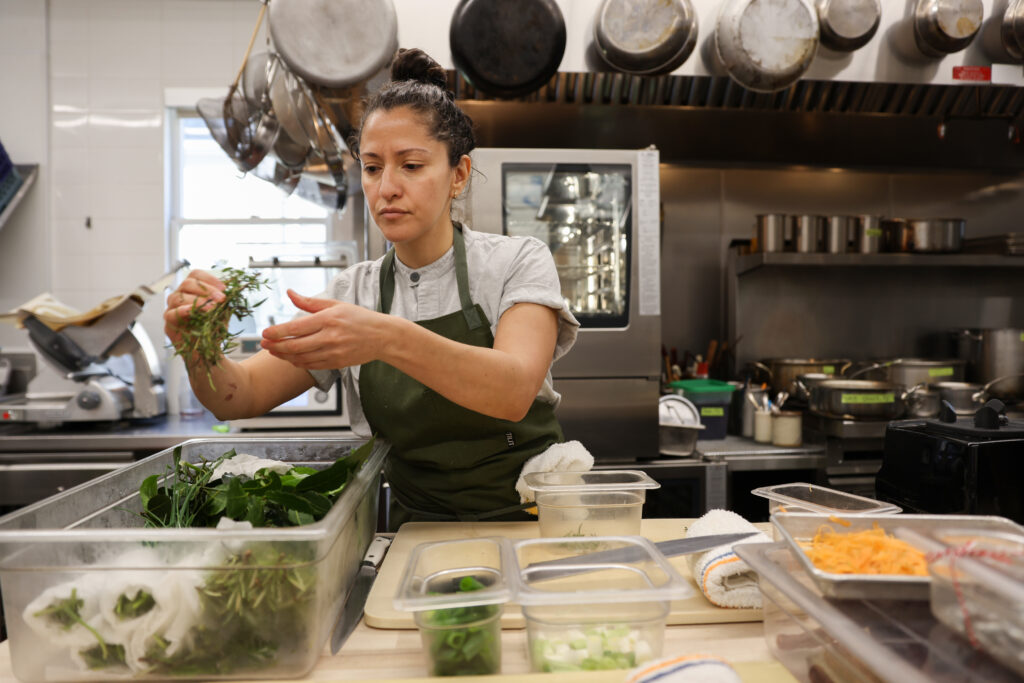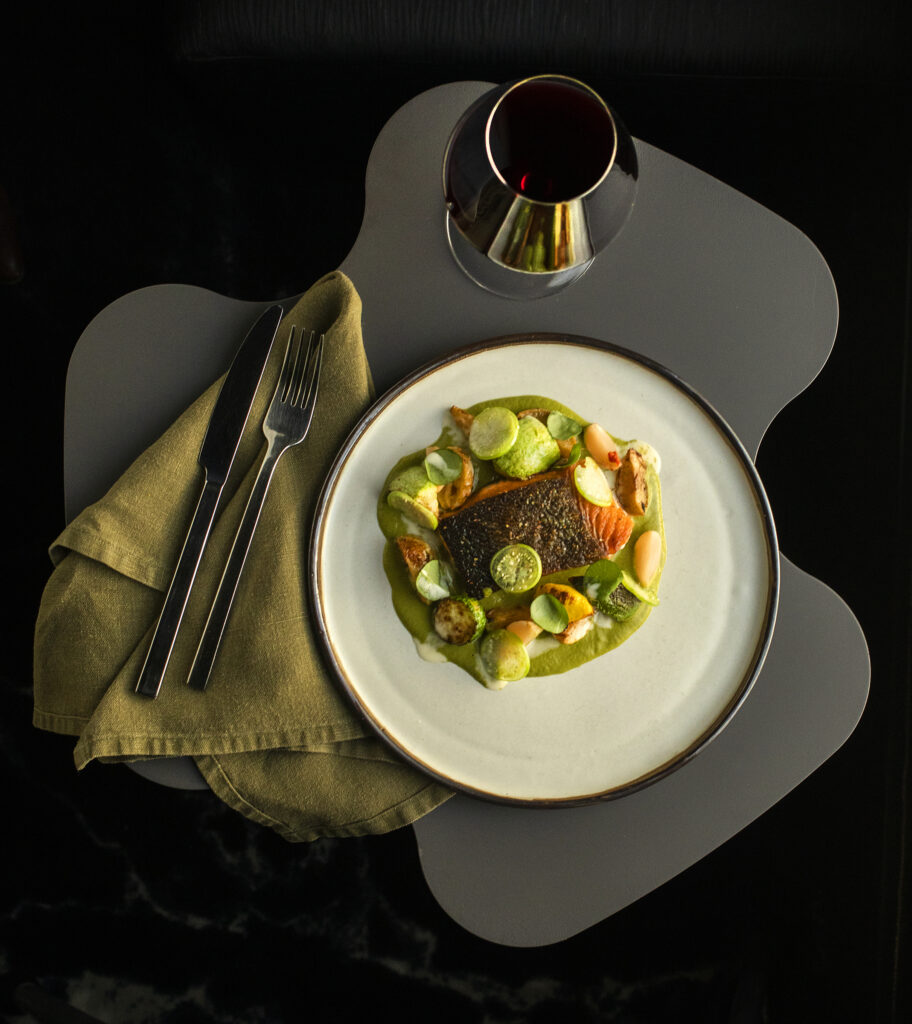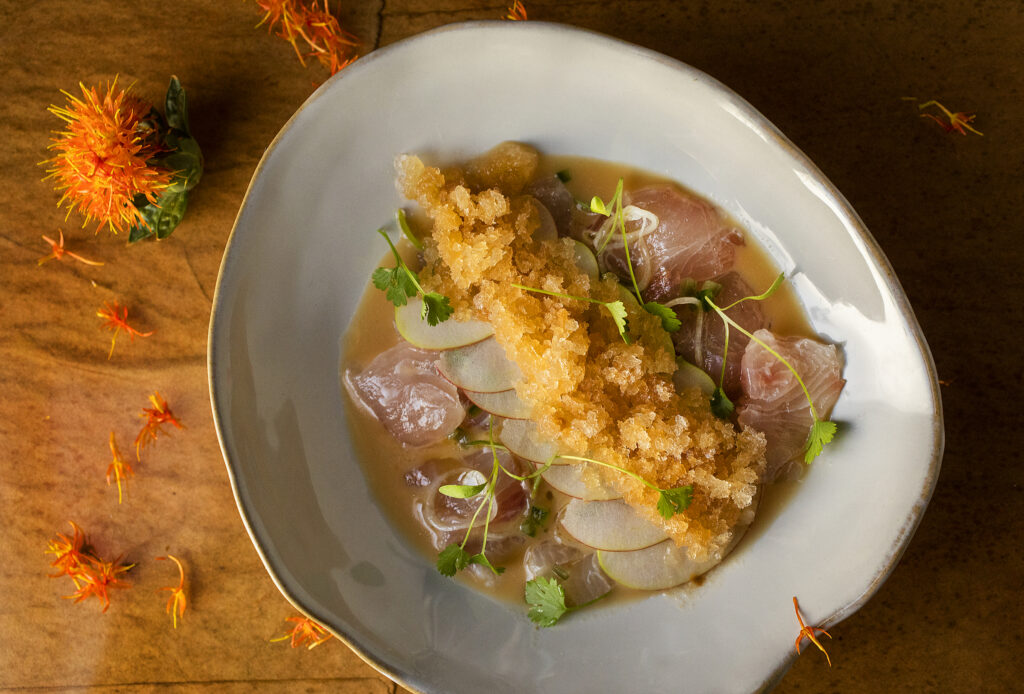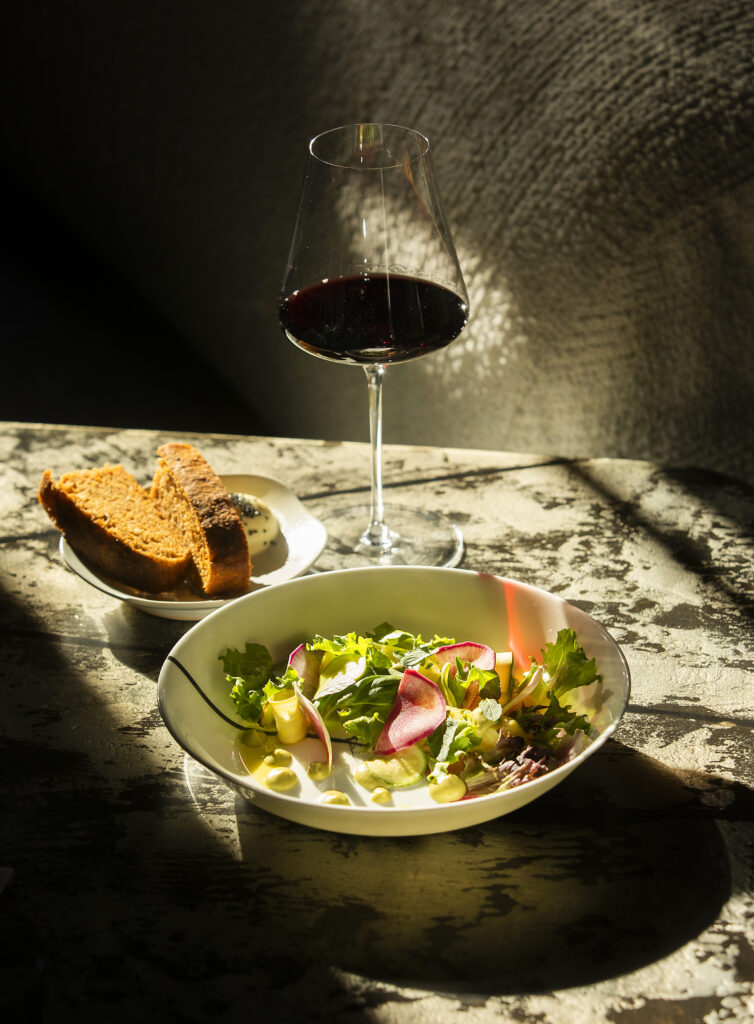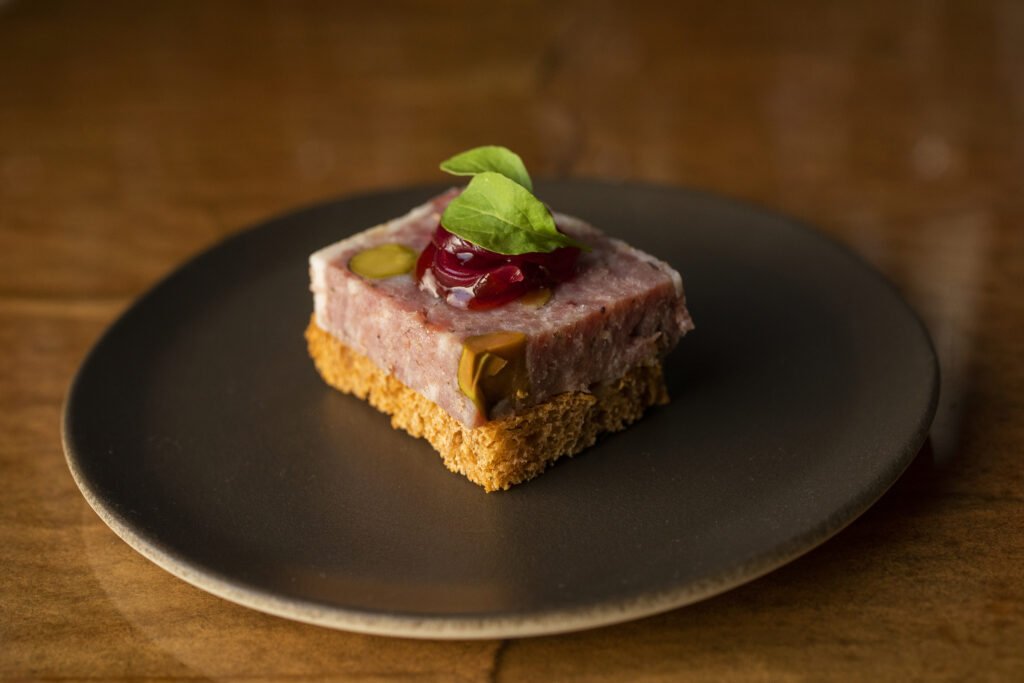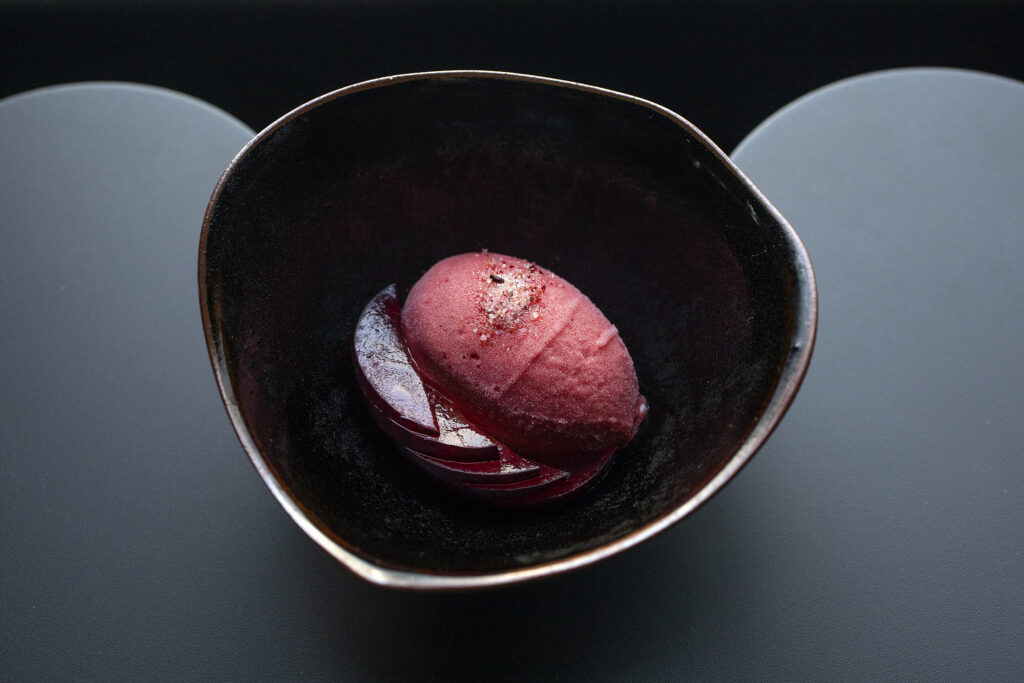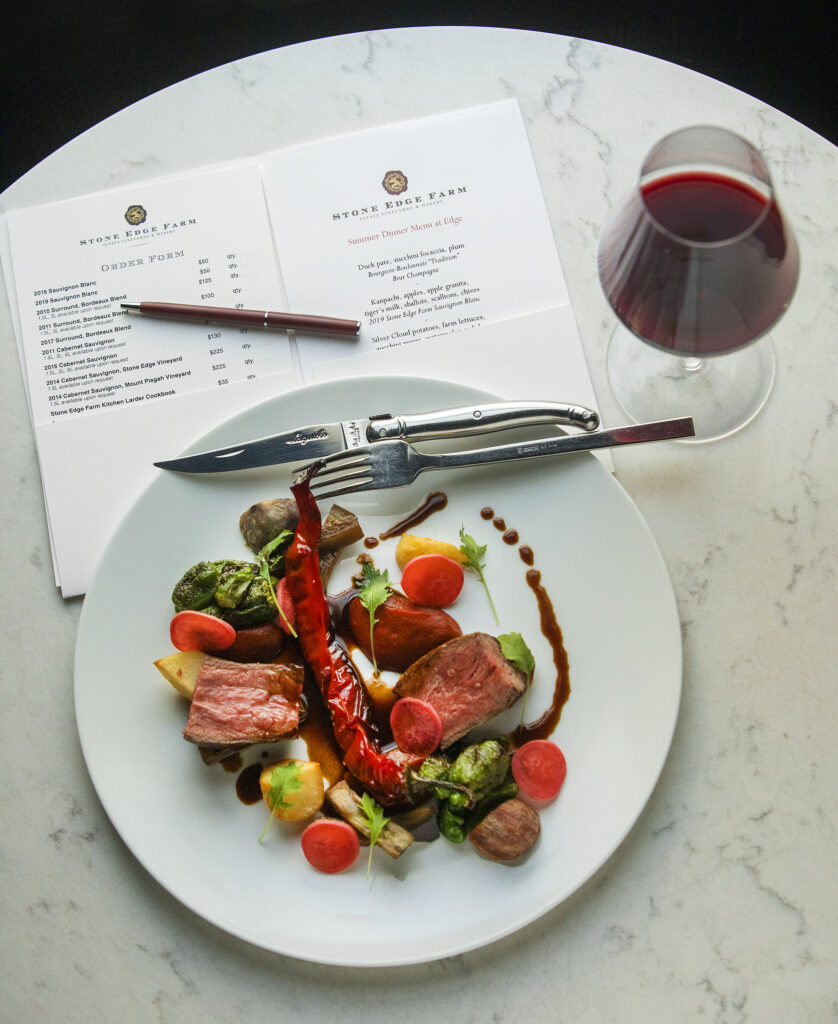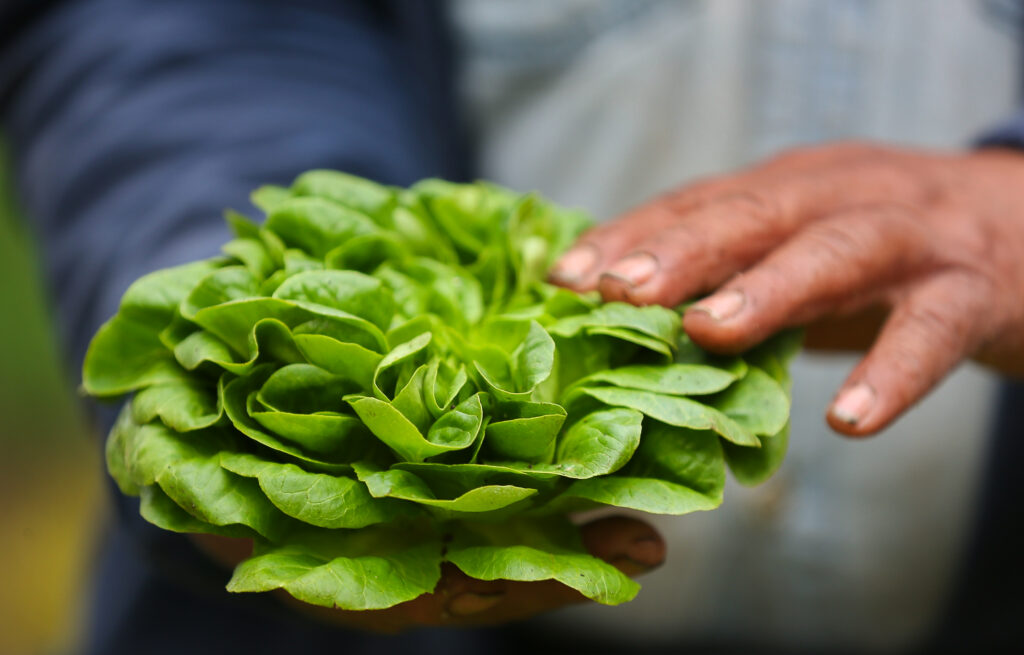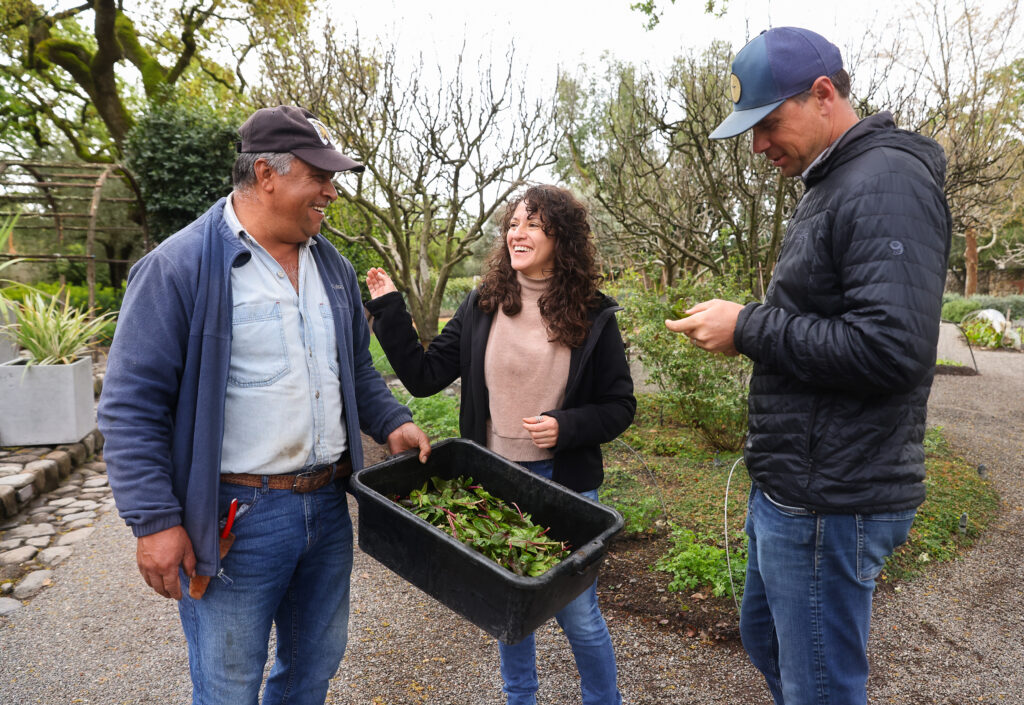Growing up in Arequipa, Peru, chef Fiorella Butron knew her life was unusual. Her mother was Peruvian, with a French great-greatgrandmother. Her grandpa on her father’s side was Italian, and her grandma was Palestinian – they met in Peru after the grandma escaped during the Israeli—Palestinian war in 1948. “I have a blend in my blood,” Butron explains.
The different cultures in her childhood household always came together in the kitchen, Butron says.
That experience would come to shape her world, as she embarked on a career that spanned continents, finally taking her to her current position as executive chef at EDGE in downtown Sonoma, a spot making waves after morphing from private supper club to full-fledged restaurant last year.
“Peruvian cuisine is already so unique,” Butron says. “But going to school, I would see that whatever my family did for the holidays or parties was so different than what my friends did. My grandma was the cook, and she would make Middle Eastern food, and also Italian, and also some Peruvian, with so many spices everywhere, and the dishes were all mixed up.”
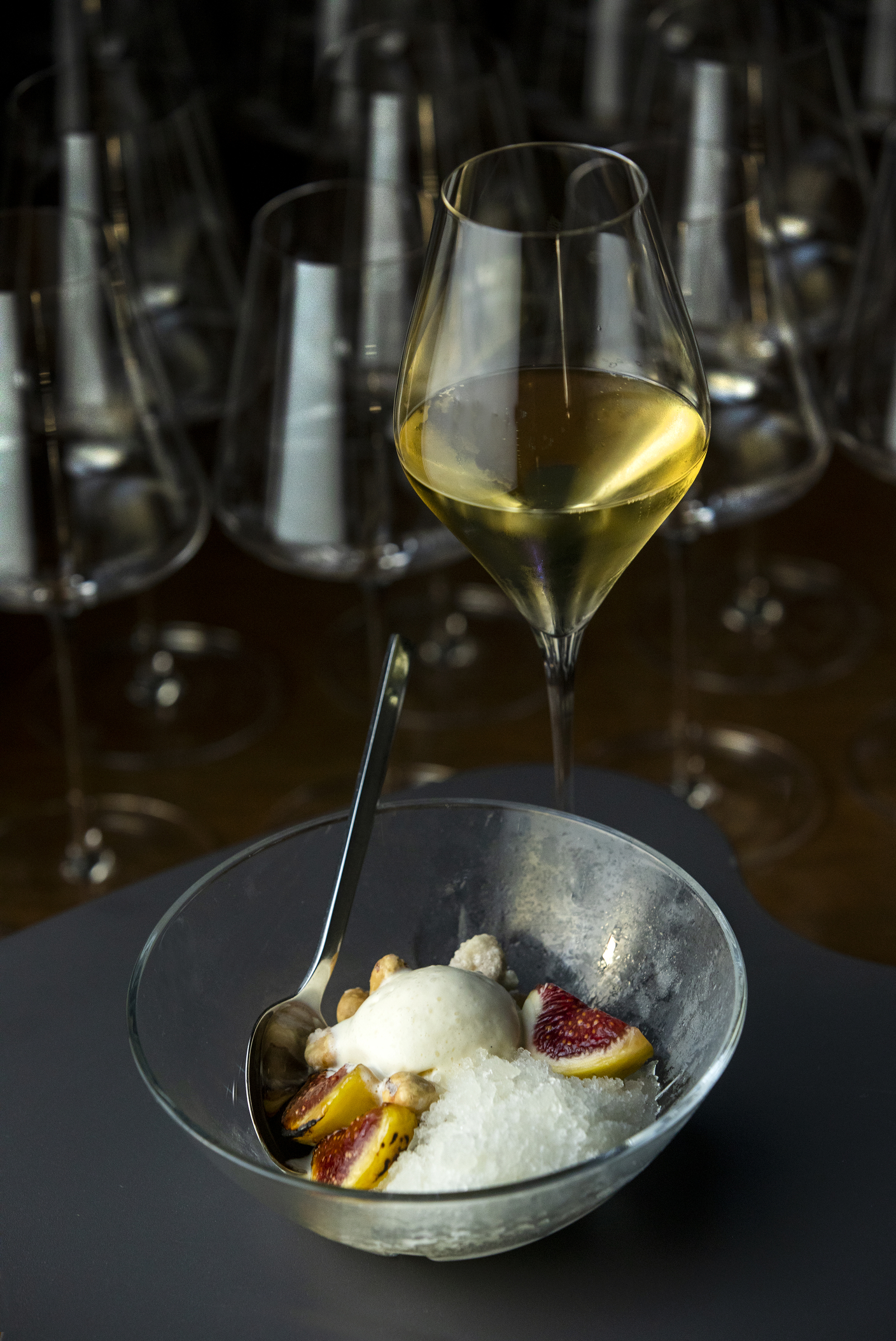
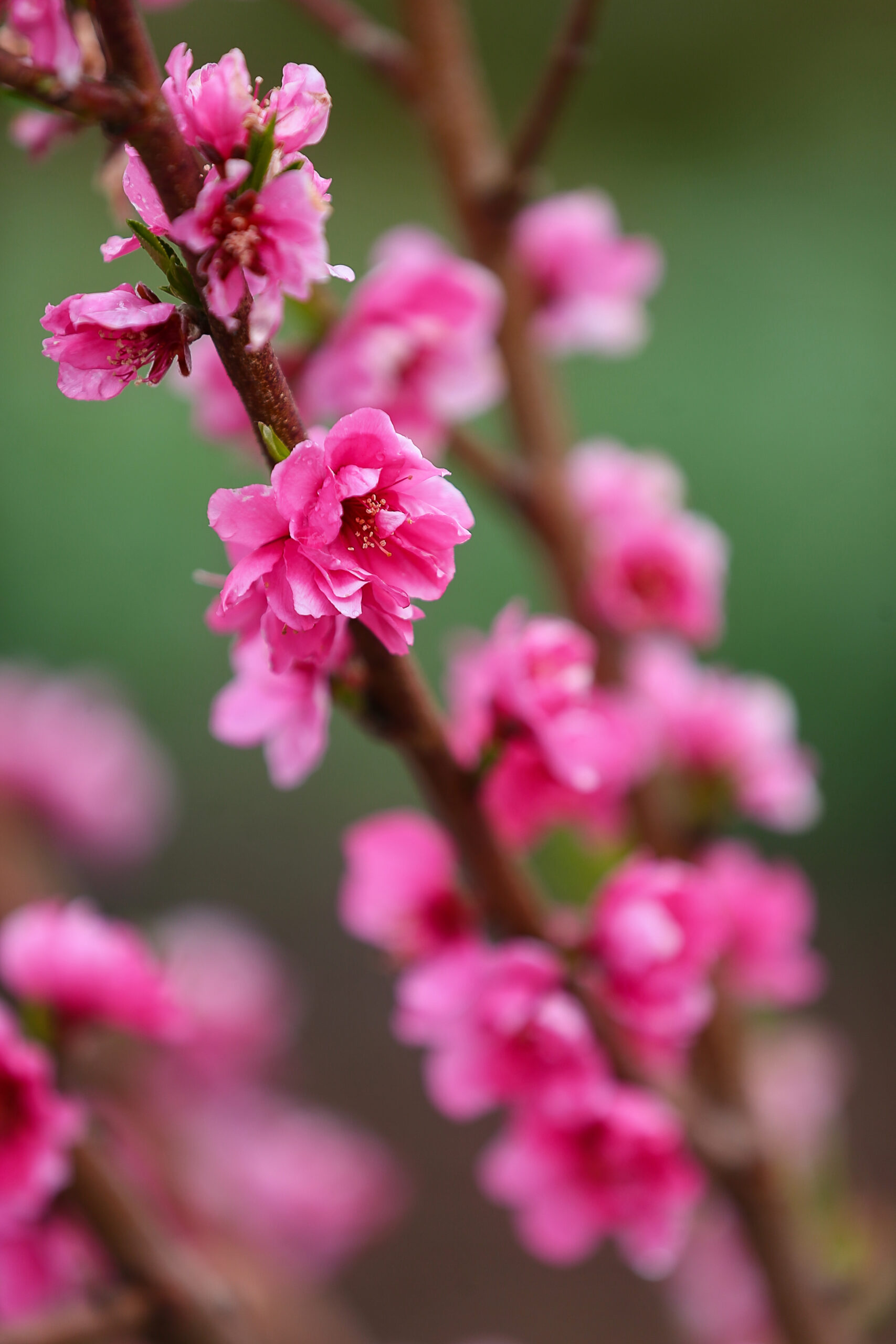
The only rule was every recipe had to be based on only the finest seasonal ingredients and meticulously prepared from scratch. “I have a very early memory of seeing this cheesecloth stuffed with some kind of curd, hanging in the outside stairway, and I was like, what is this?” she muses. It was labneh, a soft Middle Eastern cheese made from strained yogurt that her grandma tweaked with fresh herbs. “My friends didn’t have to spend all day wrapping cabbage leaves with lamb and rice and all these spices, either, or making Palestinian couscous by hand. But I loved it.”
Today, it’s little surprise that Butron’s own cooking is difficult to define. At EDGE, it’s California cuisine, but also French. And Peruvian —and Asian, Spanish, Mexican, Hawaiian. Expectations are high for the 42-seat restaurant, which offers a seven-course, prix fixe meal for $250, including wine pairings. It’s demanding work for Butron, 40, who is also a certified sommelier, and who changes the menu weekly, treating every element like a work of art, down to the sea salt-finished cultured butter that takes five days to make. Even her intermezzo is a study in style: Rather than simple shaved ice, she crafts a much more complex note, such as a smoky, fermented plum-mezcal sorbet sprinkled with Hawaiian sea salt that sparkles on the tongue.
“I tap into my memory banks,” she explains. “Incorporating so many different ingredients and flavors that I just know are going to work.”
Initially, Butron didn’t even plan on being a professional chef. For her first three years of college, she studied medicine. Later, she enrolled at Le Cordon Bleu in Lima, and for the next decade, she fed her other passion: travel, taking culinary jobs in in Florida, Hawaii, and California, as well as across Europe, Latin America, Southeast Asia, and the Indian subontinent.
That’s how her far-reaching dishes are born: silky kanpachi and crisp calamari with dollops of avocado puree, shaved tomatillo, and scallions, and a spoonful of Mendocino sea urchin on a pond of tomatillo sauce. The sauce is stunning, bright with the tomatillo’s bracing acidity and complex with sorrel and leche de tigre, the spicy citrus-and-chile marinade used to cure fish in classic Peruvian ceviche.
That global experience is why someone peeking into the EDGE kitchen might see Butron using a mortar and pestle to hand hand-press Peruvian huacatay (black mint), chiles, and peanuts into a spicy dressing to drizzle over baby lettuce tumbled with new potatoes and cucumbers.
And that’s why Butron spends so much time in the fields at the restaurant’s sister property, 16-acre Stone Edge Farm in Glen Ellen. The farm and restaurant’s owners, Mac and Leslie McQuown, allow Butron free rein to cultivate what she craves, including rare plantings like marshmallow root, clary sage, candy-striped figs so beautiful they’re impossible not to eat straight from the branch, and aji amarillo chiles grown from seeds that came home from Peru one year in the chef’s suitcase.
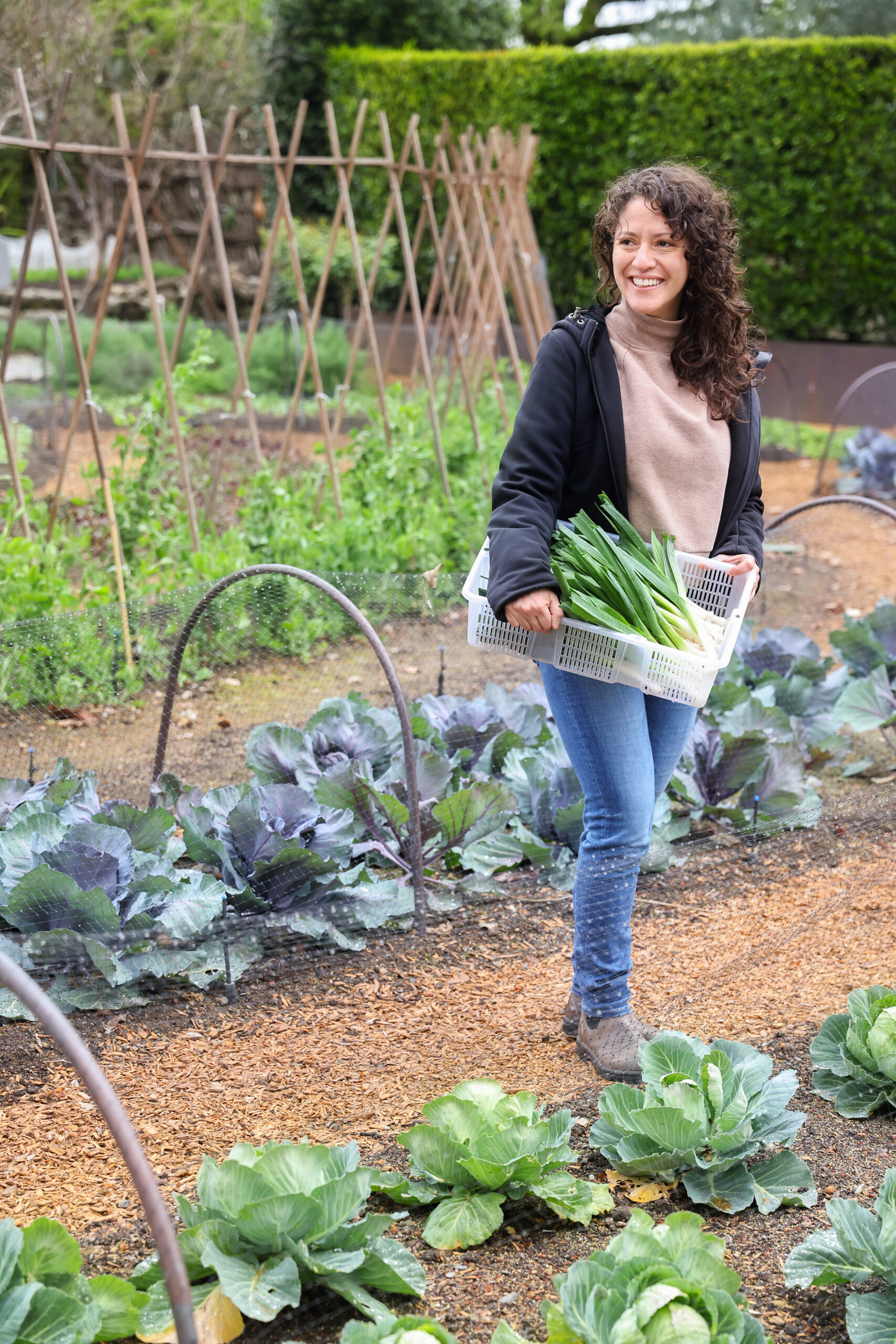
“Yacón,” she exclaims on a walk through the garden, her eyes lighting up as she plucks up a slender, golden-skinned tuber, its leaves and roots dripping rich soil. “I was so excited when I saw the bed going in,” she says. She loves the South American vegetable, which is often eaten raw and tastes of apple, watermelon, and celery — but not just for its flavor. It’s medicine, too. “Yacón is made into a sweetener syrup for people who struggle with sugar levels, since it has a low glycemic index,” she explains. “Or I love fermenting it. It ends up transparent and citrus-y, so it’s a really fun accent.”
The sorrel used in her tomatillo sauce, she notes, is another gem. The herb is high in oxalic acid, vitamin C, and iron; it lowers inflammation; and it has antibacterial and antiparasitic properties. “Its acidic notes give soups, salads, and sauces an enticing flavor, or you can simply stir some in with olive oil for vegetables and fish,” she suggests.
So now, in her free time — and she stops to laugh at that fanciful notion — she is pursuing a certification as a holistic nutritionist and herbalist. “I’m fascinated by plants and the healing properties of nature,” she says.
Finding peace is a priority these days. The war in Ukraine has weighed heavy on Butron’s mind, even as she soothes her soul cooking in the pristine EDGE kitchen with shelf after shelf of seasonings, spices, herbs, and grains. “In the ‘’80s in Peru, we went through the terrorism war, and there were bombs, and that was really scary,” she recalls. “It is so hard to understand, but it is something we have all gone through in my family for so long, that we have generational PTSD. It’s sad that it is still happening, and people are still having to leave their countries.”
“Somehow, the world goes on, and we need to see the good. Food is so important to share with each other, because it nurtures all our senses, and puts us back to what we’re tasting, smelling, touching… enjoying. It keeps things positive and together, no matter where we come from or what we are going through.”
“And that’s all we have at the end, right?”
EDGE, the restaurant of Stone Edge Farm Estate Vineyards and Winery. Prix fixe dinners Weds.-Sat. 139 E. Napa St., Sonoma, 707-935-6520, edgesonoma.com











